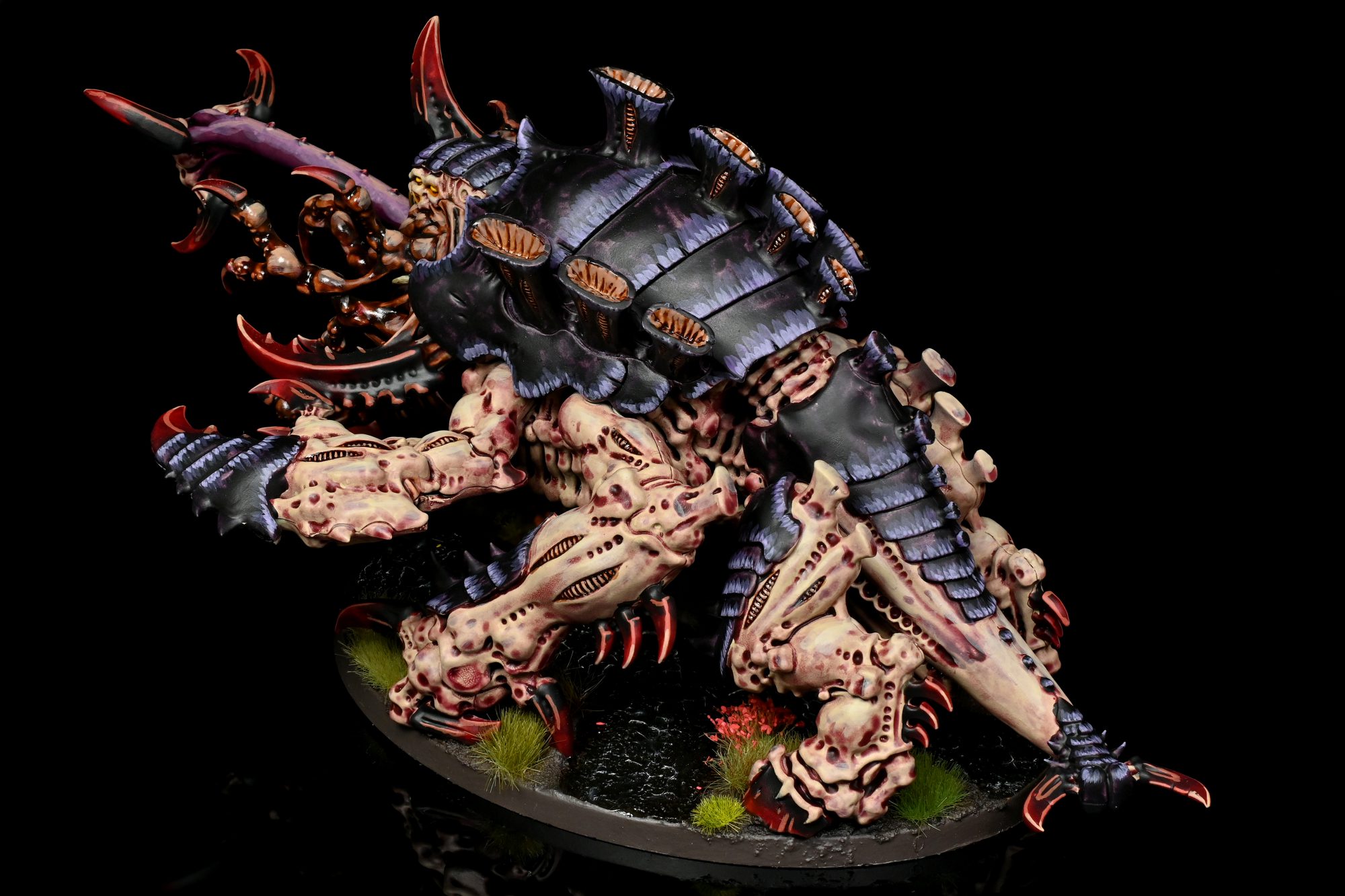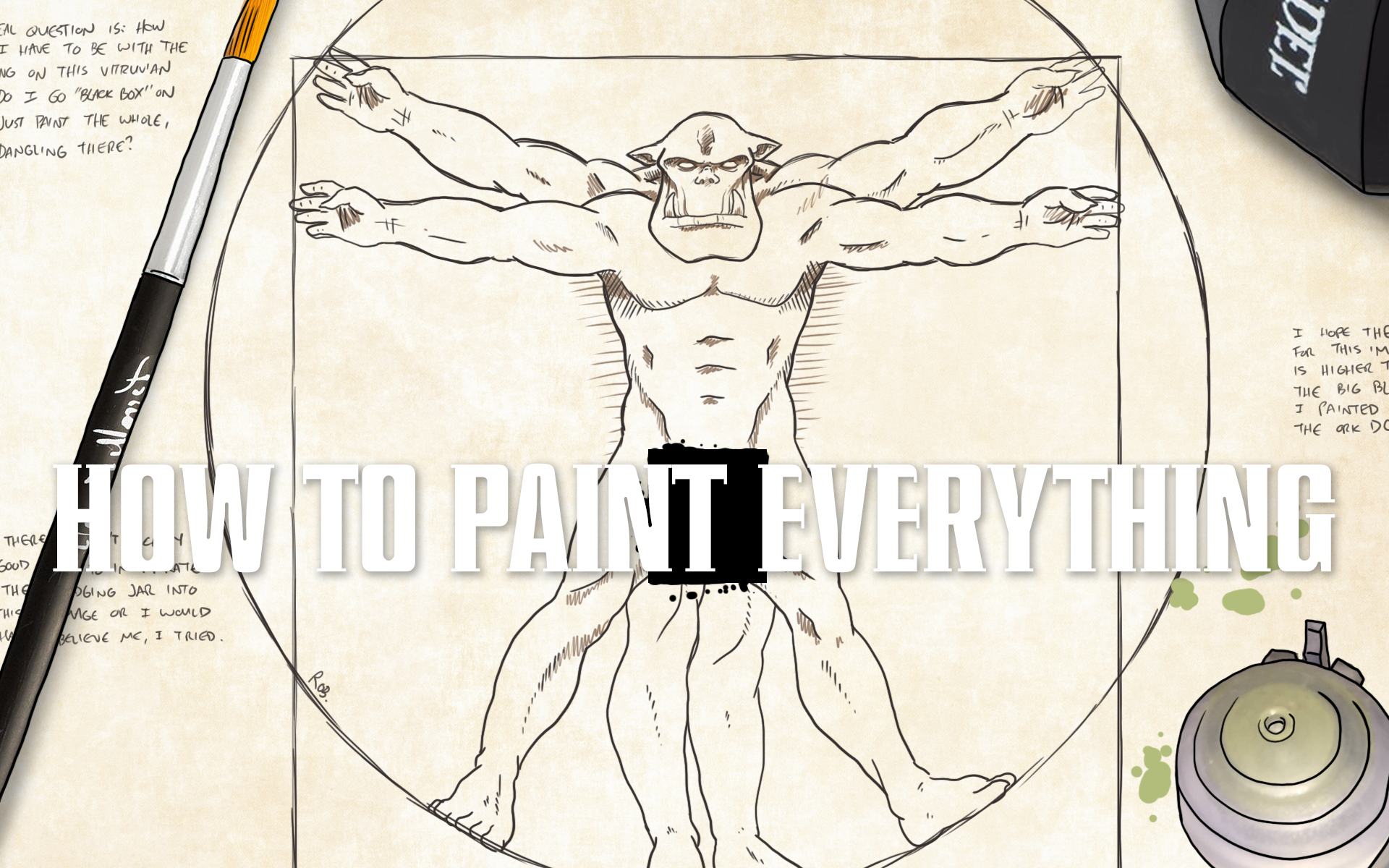In our How to Paint Everything series, we take a look at different armies of the Warhammer universe, examine their history and heraldry, and look at several different methods for painting them. In this article, we’re looking at the dreaded hive fleets of the Great Devourer – the Tyranids.
Hailing from the dark intergalactic void beyond the galaxy, Tyranids are (relatively) recent arrivals to the grim darkness of the far future from an in-game timeline standpoint, having only really arrived in the 41st millennium when the Imperium made its first official contact with Hive Fleet Behemoth. Following that contact, the forces of the Great Devourer have spread across the galaxy, razing entire worlds and scouring them of life, devouring their biomass and consuming their natural resources. Tyranids are a composite species that devour and recombine the genetic material of their prey to evolve and produce new organisms.
In the 41st millennium, the Tyranids are unique in that they’re an army with no vehicles or technology as we’d commonly understand it – instead they rely on symbiotic bioweapons and massive monsters to destroy their enemies in battle. Even the Tyranid hive ships are massive, voidborne living organisms capable of interstellar travel. This means that when painting Tyranids you’ll be working with lots of organic shapes, bone, and tissue.
In this article we’re going to take a look at different techniques for painting the Tyranids, with a look at how to paint each of the main canonical hive fleets known for ravaging the galaxy – and a few lesser fleets as well.
Covered in this Article
- Techniques for painting the core elements of the Tyranids, including chitinous armor plates.
- Schemes for painting each of the major Tyranid Hive Fleets – and schemes for quite a few minor and custom hive fleets.
- Articles on how to paint specific large Tyranid monsters.
If you’re painting Tyranids, you can count on painting a ton of large plates of the hard, chitnous armor that protects the bugs from harm. While the scheme used to paint these plates may vary by hive fleet, there’s a pretty common method for painting them that a lot of painters use, which we’ll cover here. Specifically, if you’re not planning to just drybrush and edge highlight the armor in the usual way, you may want to go for the striped look you’ve seen on a lot of models. This generally involves painting your base color, then doing two to three sets of highlights, painting large stripes in from the edges of the armor plates, and then painting progressively smaller lines within those. The end result isn’t complicated and can create some striking results. Jungle Bases - Click to expand While not a necessary part of painting Tyranids, many players opt for jungle bases on their monsters, in part to give them a more wild, savage look and to also hit some very solid Predator vibes. We’ve created an entire guide to making Jungle bases for models, which you can find here. Hive Fleets - Click to Expand Even the Tyranids aren’t a single, unified army – the Tyranid forces are made up of hundreds of groups called Hive Fleets, each with their own adaptations, physical quirks, and methods of warfare that make them unique threats to the galaxy. In this section we’ll look at how to paint each of the major hive fleets – plus a few of the smaller splinter fleets. Special Units - Click to Expand While the Tyranids don’t really have units with distinct schemes or vehicles, there are still a few units and special cases that are worth looking at separately, especially among the larger beasts in the Hive Fleets. That wraps up our look at how to paint Tyranids but there are a ton of ways to skin this particular hyper-evolved cat – Tyranids are great because they’re one of the most colorful and varied armies in the game, and let you work with all kinds of bright colors and “out there” combinations. As always, if you have any questions or feedback, drop us a note in the comments below or email us at contact@goonhammer.com. Chitinous Plates - Click to Expand
Chitinous Plates - Click to Expand In Rockfish’s Leviathan scheme -demonstrated above – The carapace is basecoated black or very dark purple and then highlighted in Genestealer and Dechala, in rough little strokes starting a bit into the panel and moving to the edge.
In Rockfish’s Leviathan scheme -demonstrated above – The carapace is basecoated black or very dark purple and then highlighted in Genestealer and Dechala, in rough little strokes starting a bit into the panel and moving to the edge.


Canon Hive Fleets
Custom Hive Fleets

The Wrap-Up (with Tendrils)


























